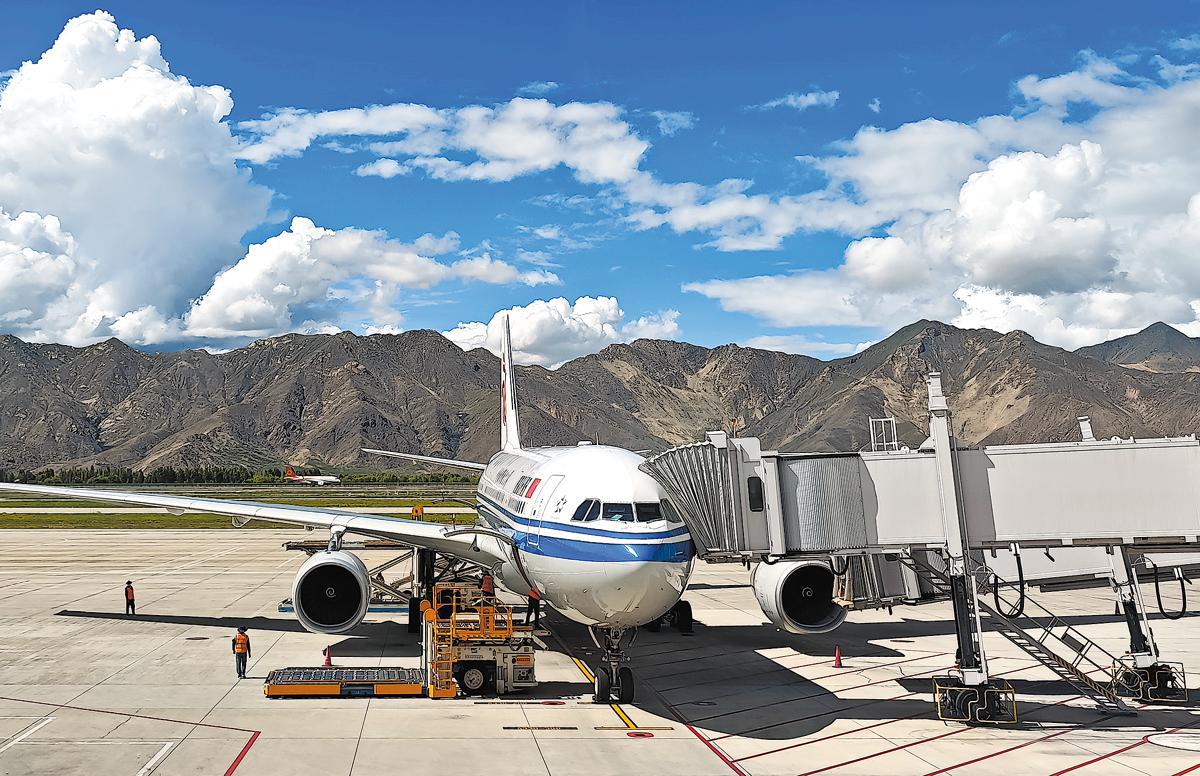Xizang air travel sees six-decade strong surge


Civil aviation in the Xizang autonomous region has grown into a lifeline for travel, trade and public services on the high-altitude plateau, with passenger numbers expected to reach 8 million by the end of 2025, officials said.
Li Hong, head of the regional administration of the Civil Aviation Administration of China, said passenger throughput reached 7.6 million in 2024, 3,523 times higher than in 1965. He said the growth marked a major leap in the scale of civil aviation and a significant improvement in regional connectivity.
Tashi Dondrub, a Lhasa resident, said the changes are visible in everyday life.
"I often travel between Lhasa and Xining of Qinghai province. It only takes two hours by air, but more than 20 hours by rail. Air travel is really convenient," he said. "The service quality has been improving and there are more airlines to choose from. I hope more airports and routes will be opened so travel within Xizang becomes even easier for local people."
This year marks the 60th anniversary of both the founding of the autonomous region and the launch of its civil aviation services. A symposium in Lhasa, capital of Xizang, on Thursday brought together officials, airlines and airport representatives to take stock of six decades of development.
Since the opening of the Beijing-Chengdu-Lhasa route in 1965, the sector has expanded rapidly.
"The number of airports increased from one to eight, runways and terminal buildings from one to 10," Li said, adding that over the past 60 years, the number of domestic routes has grown from one to 193, while international and regional routes have expanded from one to four.
The number of flights has increased from two per month to more than 230 per day, and the number of connected cities has risen from two to 81, he added.
Li also noted that Xizang's civil aviation has overcome the geographical barriers of the plateau and continuously improved its route network. Civil aviation now accounts for 68 percent of the region's comprehensive transportation system.
"This has enabled people in the region to more conveniently access essential public services such as healthcare, education and logistics available in other parts of the country," he said.
The central government has implemented a special investment policy for Xizang's airport construction, providing 100 percent capital funding. It has fully funded airport construction and invested more than 11.24 billion yuan ($1.57 billion) in key projects since 2012, with additional subsidies for airport operations exceeding 5.9 billion yuan since 2011.
"These measures have provided strong policy and financial support for the safe, healthy and rapid development of civil aviation in Xizang," Li said.
Contact the writers at palden_nyima@chinadaily.com.cn
- China opens draft regulations on data protection to public consultation
- Veteran French physicist elected to Chinese Academy of Sciences
- Former Polish deputy PM praises China's economic rise, growing influence
- HK powers the nation's equestrian development
- Forum hailed for promoting Global South modernization
- Wushu needs more events in GBA, coaches in Macao say




































